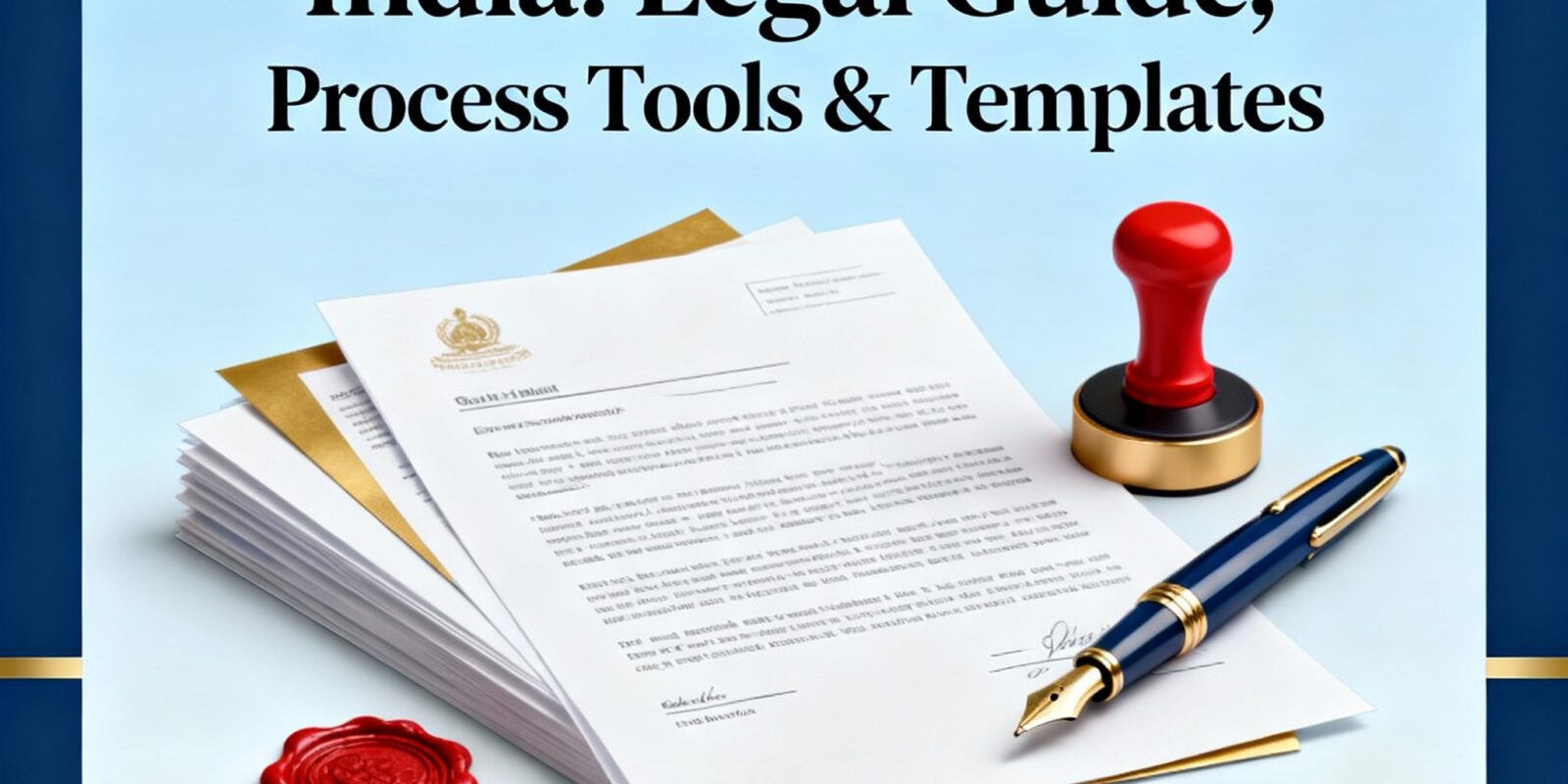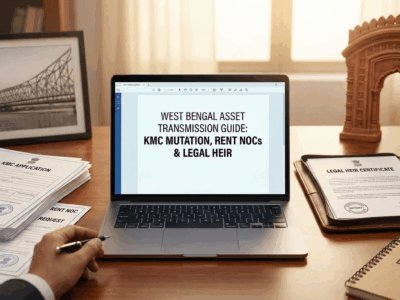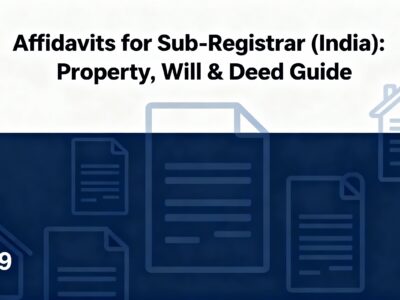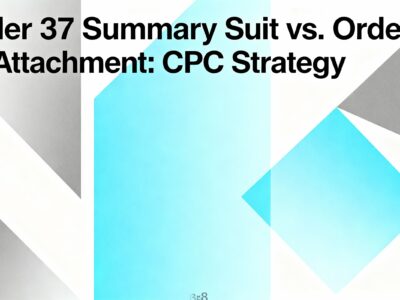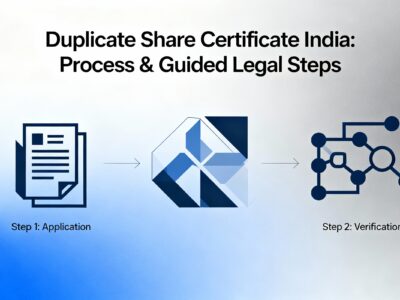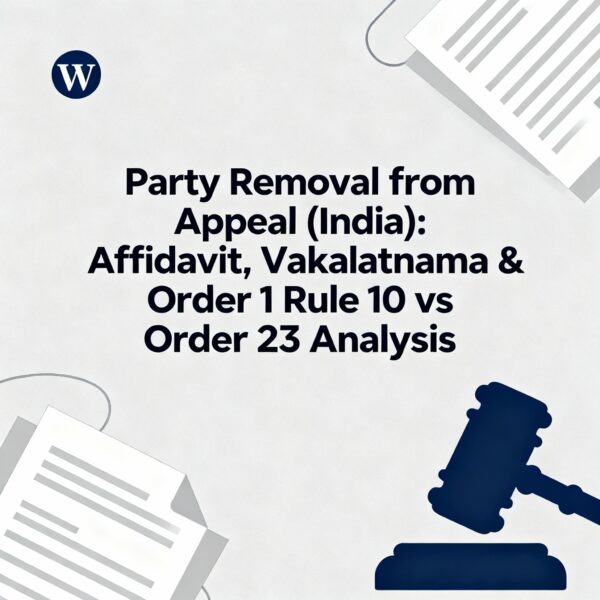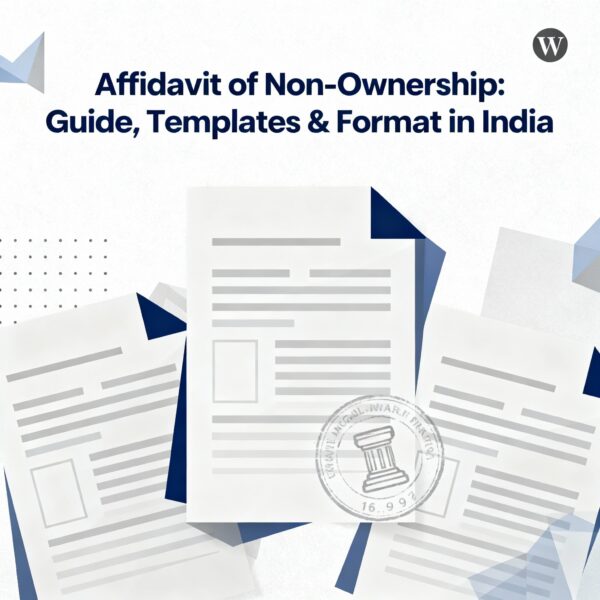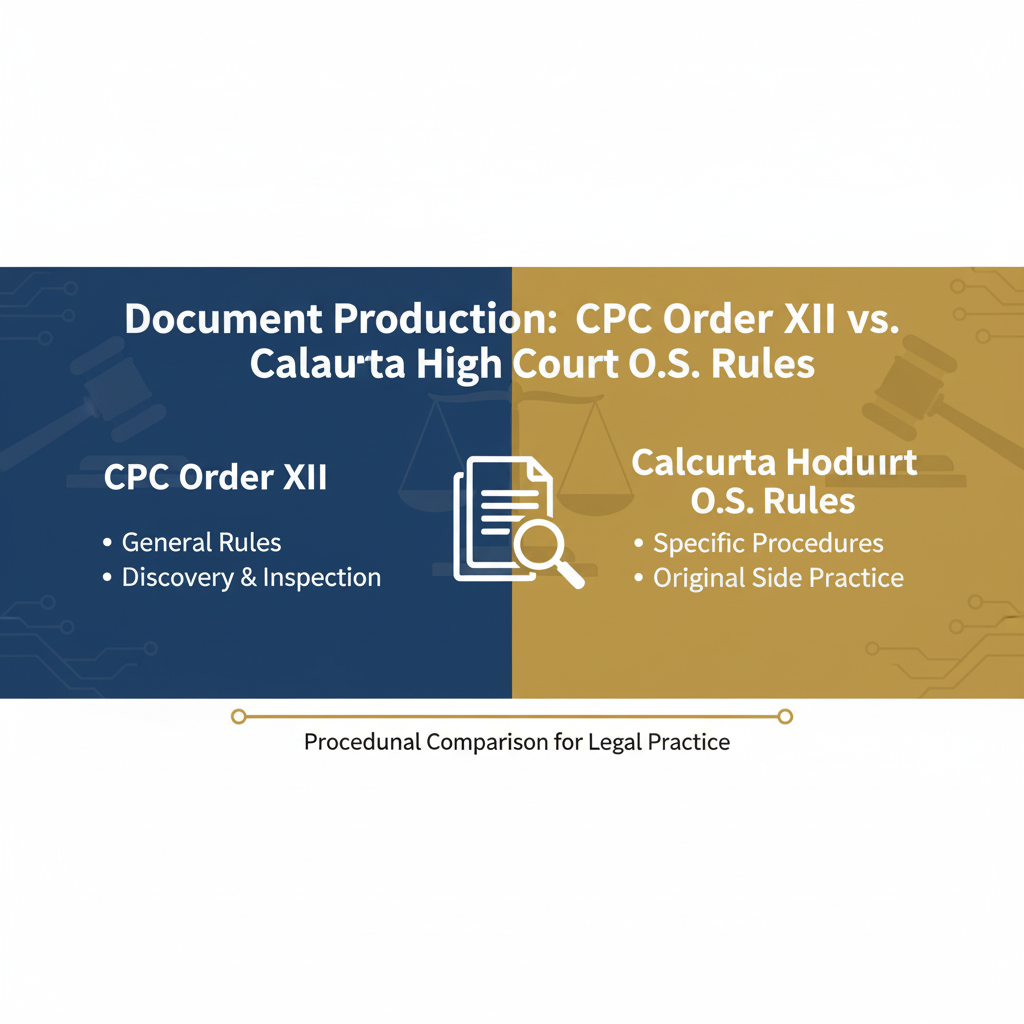Start your marriage registration in India with the most crucial document: the Marriage Affidavit. This comprehensive 2025 guide from Evaakil.com explains the complete legal process, whether you’re registering under the Hindu Marriage Act (HMA) or Special Marriage Act (SMA). We cover the required documents, online registration, affidavit formats (joint vs. individual), and provide free affidavit templates to help you get your official Marriage Certificate.
The Marriage Affidavit in India: A Legal and Practical Guide
By the Evaakil.com Legal Team | Last Updated: October 2025
The legal side of marriage in India changed in a big way after a 2006 Supreme Court judgment. This ruling made it mandatory to register all marriages, regardless of religion. The main document that starts this whole process is the Marriage Affidavit.
So, what is it? A Marriage Affidavit is a formal, sworn statement you make under oath, usually in front of a Notary Public. It's your declaration to the Marriage Registrar that all the facts about your marriage are true and that you meet all the legal conditions to be married. This document is the primary evidence the Registrar uses to issue your official Marriage Certificate. Without it, you can't complete the registration.
A Binding Declaration
This affidavit legally binds your statements to the public record. We've visualised this concept of a legal bond below.
Affidavit vs. Certificate: A Key Difference
Many people mix up the Marriage Affidavit and the Marriage Certificate. They are connected, but they do very different jobs and have different legal weights. Understanding this difference is essential.
The affidavit is a document you create *before* you apply. It's your sworn testimony *to* the government. The Marriage Certificate is the final, official document the government issues *to you* after everything is verified. The certificate is the state's official confirmation of your marriage.
You can't use the affidavit for things like visa interviews or adding a spouse's name to a passport. For those, you need the final Marriage Certificate. The certificate is the universally accepted, primary proof of your marriage for all legal, financial, and administrative tasks.
| Aspect | Marriage Affidavit | Marriage Certificate |
|---|---|---|
| Nature of Document | A sworn, notarized declaration of facts by the couple. A supporting document. | An official, government-issued document certifying the legal registration of a marriage. The final proof. |
| Issuing Authority | Created by the applicants and attested by a Notary Public. | Issued by a government-appointed Marriage Registrar or Sub-Divisional Magistrate (SDM). |
| Timing | Prepared *before* submitting the marriage registration application. | Issued *after* the successful completion of the registration process. |
| Legal Standing | Legally binding on you. Lying is perjury. Not accepted as primary proof for visas, etc. | Conclusive and primary legal proof of marriage for all official purposes. |
| Primary Use Case | To support the application for a Marriage Certificate. | To prove marital status for passports, visas, bank accounts, insurance, and inheritance. |
Individual or Joint? Types of Affidavits
The affidavit can be made in two main formats: separate individual statements or one single joint declaration. The format you need often depends on the specific rules of your local Marriage Registrar's office.
Two Paths to Declaration
Option 1: Individual Affidavits
Each spouse signs a separate document. (Common in Delhi)
Groom's Affidavit (His details)
+
Bride's Affidavit (Her details)
Option 2: Joint Affidavit
Both spouses sign one single document, often with a joint photo.
Joint Affidavit (All details + Joint Photo)
Always check with your local Registrar's office to see which format they require before you draft the document.
What's Inside an Affidavit? (Essential Components)
A proper marriage affidavit must include a series of specific declarations. These aren't random; they are designed to prove your marriage follows all legal rules.
Key Declarations Checklist
What Documents Must Accompany the Affidavit?
The affidavit doesn't stand alone. It's the cover letter for a file of supporting documents. Your application will be rejected if these proofs are missing. While the exact list can vary slightly by state, you will almost always need:
Supporting Document Checklist
The Legal Frameworks: HMA vs. SMA
The exact contents of your affidavit depend on the law you're registering under. The two main laws are the Hindu Marriage Act, 1955 (for Hindus, Buddhists, Jains, and Sikhs) and the Special Marriage Act, 1954 (a secular law for everyone, including inter-faith couples).
Filter by Act:
Hindu Marriage Act, 1955 (HMA)
This applies if both parties are Hindu, Buddhist, Jain, or Sikh. The affidavit must swear that you meet the 5 conditions in Section 5 of the Act, covering monogamy, mental capacity, legal age, and not being in a "prohibited" or "sapinda" relationship (specific definitions in Hindu personal law).
Special Marriage Act, 1954 (SMA)
This is the secular, civil marriage law for all citizens. It's used for inter-faith marriages or by anyone choosing a civil union. The process is different: you first file a "Notice of Intended Marriage." This notice is posted publicly for 30 days to allow for objections. After 30 days, if there are no valid objections, you sign a final declaration (like an affidavit) before the Marriage Officer to complete the marriage.
How to Create Your Affidavit: A Practical Guide
Creating the affidavit is a precise, step-by-step process. Errors here can get your application rejected.
1. Drafting the Affidavit
You can find templates online (like the ones below), use a free online affidavit generator to get started, or have a legal professional draft it to prevent mistakes. It's very important to check if your local Registrar's office has a specific format. The language must be formal and clear.
2. The Stamp Paper
The affidavit must be printed on non-judicial stamp paper of the correct value. This value is set by state law and varies across India. Using the wrong value can invalidate the document.
Indicative Stamp Duty for Affidavits (by State)
Values can change. Always verify the current rate in your state.
3. The Role of the Notary Public
This is the final, essential step. You must physically go before a Notary Public and sign the affidavit *in their presence*. The Notary's job is to:
- Verify your identity (using your Passport, Aadhaar, etc.).
- Administer an oath (where you swear the contents are true).
- Witness your signature.
- Certify the document with their own signature, official seal, and registration number.
The Process, Step-by-Step (From Affidavit to Certificate)
The affidavit is just one part of the journey. Here is a general timeline of the entire registration process.
Marriage Registration Timeline
Draft Affidavit & Gather Documents
Prepare the affidavit (joint or individual) as per your local rules. Collect all required proofs (ID, address, age, photos, etc.) as listed in the section above.
Purchase Stamp Paper & Notarize
Print the affidavit on non-judicial stamp paper of the correct value. Both spouses (if joint) sign it in front of a Notary Public and get it attested.
File Application (Online/Offline)
Fill out the official marriage registration form for your state (many states have online portals). Upload or attach the notarized affidavit and all supporting documents.
Schedule Appointment
After filing, you will receive an appointment date to appear physically at the Marriage Registrar's or SDM's office. This may take a few days to a few weeks.
Appear Before Registrar
Both spouses, along with 2-3 witnesses (who must also bring their ID and address proofs), must appear before the Registrar on the given date.
Final Verification & Signing
The Registrar will verify your original documents, check your affidavit, and ask you to sign the official marriage register. Your witnesses will also sign.
Certificate Issued
Once satisfied, the Registrar will officially approve the registration. The final, printed Marriage Certificate is typically issued on the same day or within a few working days.
The Digital Shift: Online Registration Portals
Many states, including major metropolitan areas like Delhi, Mumbai, and Bengaluru, have streamlined the initial part of the registration process. These government portals offer significant convenience but do not eliminate the need for physical verification.
How Online Portals Work
The typical online process involves:
- Online Form Submission: Filling out the complete application form (the equivalent of Form 'A' for HMA) on the state's e-district or marriage portal.
- Document Upload: Uploading scanned copies of all your documents—the notarized affidavit, ID proofs, address proofs, photos, and witness details.
- Fee Payment: Paying the required registration fee online.
- Appointment Scheduling: The portal allows you to select an available date and time for your in-person appointment, saving you a trip just to get a date.
The Legal Consequences (This is Serious)
An affidavit is not just paperwork. It's a legally binding document. You are swearing under oath that the contents are true. If you lie, you face serious consequences.
Warning: The Cost of a False Statement
Knowingly Lying in an Affidavit
(e.g., hiding a previous marriage)
"Giving False Evidence"
(Indian Penal Code, Sec 191)
Punishment
Up to 7 years in prison and a fine.
This threat is what ensures the marriage registration system can be trusted. Your affidavit can also be used as evidence in future civil cases (like divorce or annulment proceedings).
Common Pitfalls and How to Avoid Them
The registration process can be stalled by simple, avoidable errors. Being aware of these common pitfalls can save you time and multiple trips to the Registrar's office.
Common Rejection Reasons
Solution: Ensure consistency across all documents *before* you apply.
Solution: Check the local residency rules for your Registrar's office.
Solution: Verify the current required stamp duty value for affidavits in your specific state.
Solution: Confirm with your witnesses in advance and ensure they bring their original, valid ID and address proof.
Handling Special Scenarios
Marriage registrations can have unique complications. Here’s how to handle two of the most common ones.
Scenario 1: One Spouse is an NRI/Foreign National
If one party is a foreign national or an NRI, the process is slightly different:
- Special Marriage Act: The marriage will almost certainly be registered under the Special Marriage Act, 1954.
- NOC/Marital Status Certificate: The foreign national must provide a "No Objection Certificate" (NOC) or a "Single Status Affidavit" from their embassy in India. This document proves they are legally free to marry.
- Passport & Visa: The original passport and a valid Indian visa (e.g., Tourist, Business) are mandatory.
- Residence Proof: Proof of stay in India (e.g., a C-Form from a hotel or a rent agreement) is often required.
Scenario 2: Name Change After Marriage
A marriage certificate is the first step to legally change a name (typically for the bride).
- Affidavit Clause: The affidavit itself should contain a clause stating this, e.g., "I, [Bride's Maiden Name], will henceforth be known as [Bride's Married Name]." (As seen in the sample template).
- Separate Affidavit: For passport/bank changes, you may need a *separate* "One and the Same Person Affidavit" for name change, using the marriage certificate as the primary proof.
- Gazette Publication: While not always needed for passport changes (if the spouse's name is just being added), a formal name change sometimes requires publishing the change in the Official Gazette of India.
Using Your Marriage Certificate (Domestic & International)
After your affidavit is accepted and the process is complete, you get your official Marriage Certificate. This document is your "legal passport" as a couple.
Domestic Applications
You will need the Marriage Certificate for:
- Adding a spouse's name to a passport.
- Opening a joint bank account.
- Adding a spouse to insurance policies.
- Claiming pensions or inheritance.
International Spouse Visa Applications
The Indian Marriage Certificate is the foundational document for any spouse visa. However, other countries have their own additional requirements.
USA (Form I-864)
The U.S. requires the Indian Marriage Certificate, but also heavily focuses on a *different* document: the "Affidavit of Support" (Form I-864). This is a binding financial contract where the U.S. sponsor promises to financially support the immigrant spouse. This is completely separate from the Indian marriage affidavit.
United Kingdom (Genuine Relationship)
The UK requires the Marriage Certificate but also rigorously tests if the relationship is "genuine and subsisting." You must provide extra proof like photos together, joint utility bills, tenancy agreements, and letters explaining your relationship history.
Australia (Apostille)
For your Indian Marriage Certificate to be valid in Australia, it must be "legalized." This is done by getting an Apostille stamp from the Indian Ministry of External Affairs (MEA). The Apostille verifies the document is authentic for use in other countries (like Australia) that are part of the Hague Convention.
Sample Affidavit Templates (For Reference)
Disclaimer: These are illustrative samples. Your local Registrar's office may have a different, specific format. Always confirm the required format and consult a legal professional.
(To be printed on non-judicial stamp paper of the appropriate value as per state law)
**AFFIDAVIT**
I, [Groom's Full Name], son of [Groom's Father's Name], aged [Age] years, residing at [Full Residential Address], do hereby solemnly affirm and declare as under:
1. That my marriage with Ms. [Bride's Full Name], daughter of [Bride's Father's Name], resident of [Bride's Address], was solemnized on [Date of Marriage] at [Place of Marriage] according to Hindu rites and ceremonies.
2. That my date of birth is [Groom's DOB], and at the time of the aforementioned marriage, I had completed [Age at time of marriage] years of age, thereby fulfilling the age requirement as per the Hindu Marriage Act, 1955.
3. That I was unmarried at the time of my marriage on [Date of Marriage] and did not have any other living spouse.
*(Note: If divorced/widower, state: "That I was a legal divorcee/widower at the time of my marriage..." and attach proof.)*
4. That at the time of marriage, I was not related to my spouse, Ms. [Bride's Full Name], within the degrees of prohibited relationship and we are not sapindas of each other as defined under the Hindu Marriage Act, 1955.
5. That I belong to the Hindu religion.
6. That I am a citizen of India.
**Deponent**
**VERIFICATION**
Verified at [Place of Verification] on this [Date] day of [Month], [Year], that the contents of this affidavit are true and correct to the best of my knowledge and belief, and that nothing material has been concealed therefrom.
**(Groom's Signature)**
**Deponent**
*(Attestation by Notary Public with seal and signature)*
(To be printed on non-judicial stamp paper of the appropriate value as per state law)
**AFFIDAVIT**
I, [Bride's Full Name], daughter of [Bride's Father's Name] and wife of [Groom's Full Name], aged [Age] years, residing at [Full Residential Address], do hereby solemnly affirm and declare as under:
1. That my maiden name was [Bride's Maiden Name], and after my marriage to [Groom's Full Name], I am now known as [Bride's Married Name]. Both names refer to one and the same person, that is, myself.
*(Note: This clause is important for name changes.)*
2. That my marriage with Mr. [Groom's Full Name], son of [Groom's Father's Name], was solemnized on [Date of Marriage] at [Full Place of Marriage] according to Hindu rites and ceremonies.
3. That my date of birth is [Bride's DOB], and at the time of the aforementioned marriage, I had completed [Age at time of marriage] years of age, thereby fulfilling the age requirement as per the Hindu Marriage Act, 1955.
4. That I was unmarried at the time of my marriage on [Date of Marriage] and did not have any other living spouse.
5. That at the time of marriage, I was not related to my spouse, Mr. [Groom's Full Name], within the degrees of prohibited relationship and we are not sapindas of each other as defined under the Hindu Marriage Act, 1955.
6. That I belong to the Hindu religion and am a citizen of India.
**Deponent**
**VERIFICATION**
Verified at [Place of Verification] on this [Date] day of [Month], [Year], that the contents of this affidavit are true and correct to the best of my knowledge and belief, and that nothing material has been concealed therefrom.
**(Bride's Signature)**
**Deponent**
*(Attestation by Notary Public with seal and signature)*
(To be printed on non-judicial stamp paper of the appropriate value as per state law)
**JOINT AFFIDAVIT FOR REGISTRATION OF MARRIAGE**
We,
1. [Groom's Full Name], son of [Groom's Father's Name], aged [Age] years, resident of [Full Residential Address].
AND
2. [Bride's Full Name], daughter of [Bride's Father's Name] and wife of [Groom's Full Name], aged [Age] years, resident of [Full Residential Address].
Do hereby solemnly affirm and jointly declare as under:
1. That our marriage was solemnized with each other on [Date of Marriage] at [Full Place of Marriage] as per [Hindu/Christian/etc.] rites and customs, and we have been living together as husband and wife since the said date.
2. That at the time of our marriage, we both fulfilled all the conditions for a valid marriage as per the [Applicable Marriage Act].
3. That at the time of our marriage, we were both unmarried and neither of us had a living spouse.
4. That at the time of our marriage, the deponent No. 1 (husband) was [Groom's Age] years old and the deponent No. 2 (wife) was [Bride's Age] years old, and we were both of legal age to marry.
5. That we are not related to each other within the degrees of prohibited relationship as defined under the [Applicable Marriage Act].
6. That we are executing this affidavit to be submitted to the office of the Registrar of Marriages, [Name of City/District], for the purpose of registering our marriage and obtaining a Marriage Certificate.
**Deponents**
**VERIFICATION**
Verified at [Place of Verification] on this [Date] day of [Month], [Year], that the contents of our above joint affidavit are true and correct to the best of our knowledge and belief, and that nothing material has been concealed therefrom.
**(Signature of Deponent 1 - Husband)**
[Groom's Full Name]
**(Signature of Deponent 2 - Wife)**
[Bride's Full Name]
*(Affix Joint Photograph Here, if required)*
*(The photograph should be attested by the Notary Public with a signature and seal crossing over the photo and the paper.)*
*(Attestation by Notary Public with seal and signature)*
Frequently Asked Questions (FAQ)
What if my marriage was solemnized many years ago? Can I still register it?
Yes, absolutely. There is no time limit to register a marriage under the Hindu Marriage Act. You can apply for registration even 10 or 20 years after the ceremony. The process remains the same, but you may be asked to pay a small "condonation fee" for the delay.
What happens if I lose my original Marriage Affidavit?
The affidavit is submitted to the Registrar's office and becomes part of their permanent record, so you don't "keep" it. If you mean you lost it *before* submission, you must simply draft a new one, get it printed on new stamp paper, and have it notarized again. If you lose your final *Marriage Certificate*, that is more serious. You must apply for a certified copy from the same Registrar's office where it was originally issued.
Do I need a lawyer to register my marriage?
No, it is not mandatory. The process is designed to be completed by the citizens themselves. However, many people hire a lawyer or a consultant to handle the paperwork, ensure all documents are correct, and navigate the process, which can save time and prevent rejections due to technical errors.
My invitation card has a different date than the actual ceremony. What do I do?
Always state the *actual* date the marriage ceremony was completed in your affidavit. The invitation card is just one piece of supporting evidence. You can support the correct date with photographs of the ceremony or a letter from the priest/religious institution where the marriage took place.
Why This Document Matters
The Marriage Affidavit is more than just a form. It's the sworn testimony that starts the legal registration of your marriage. It acts as a tool to enforce marriage laws, a deterrent against illegal practices like child marriage or bigamy, and a binding legal statement.
Understanding what this document is, how it differs from the certificate, and the serious nature of the oath you take is the first and most important step to securing your official Marriage Certificate—the document that validates your union and unlocks your legal rights as a couple in India and around the world.

